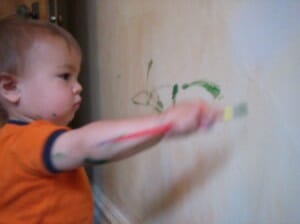
Your interior painting job was done so beautifully, and the paint complemented your Athens home for several years, but now your walls lack the previous charm, due to the chipping, or scuffing, or peeling of paint. If you cannot afford repainting, then a touch up is the best option for you.
How to Touch Up Paint on Walls?
Applying touch up paint on the walls is not a difficult task, you will be done in an hour, but your touch ups will appear like blotches if you are impatient, and if you do not get the right paint. The difficulty does not lie in the act of applying the touch up, but the art of touching up. Here are a few points that you should consider, when you apply touch up paint on your walls:
Observe
Before you start with the touch up process, it is important that you carefully observe all the touch up areas. If you find any holes fill them, or if you spot any other damages, repair them. If you feel that the paint looks damaged due to the dirt, then clean the wall first. If the problem is not solved, then you should proceed with the touch up.
Prepare
Half the battle is won, if you get the right paint for the touch up. Those of you who have some paint left in the can that you had used to paint your walls, are lucky. If you are someone who does not have any paint left, it might be difficult for you to find the same shade of paint (unless it is a stock color). Once you get the required shade of paint, pour it into a tray, and reduce it to about 15 percent using a reducer. Stir the paint well. If you had used a roller to paint your walls, then you better use a roller to touch up (use a small roller this time), or you can use a paint brush.
Touch Up
Now, that you are ready with the tray of paint, and the roller (or paint brush), you can start with the touch up. To begin, choose a touch up area which is not so prominent, and apply the paint to the center of that area, and then feather the edges. Now, wait for the paint to dry (you can use a blow dryer if you are impatient). After the touch up has dried, examine the wall from various angles to detect any inconsistency. If you find that the touch up blends with the paint on the wall, then touch up the other areas too.
Things to Remember
If you had applied custom paint on your walls, it will be very difficult (nearly impossible) to find the right shade of the paint, as you can never replicate the original proportion of mixing. So, it is better to repaint the wall in this case. If you want to avoid the risk of “flashing”, you can always hire your professional Athens painting contractor to do the job. In any case, the right paint and the right technique, will make a good touch up. So, just be careful while applying touch up paint on the walls, and I am sure that you will do a nice job!